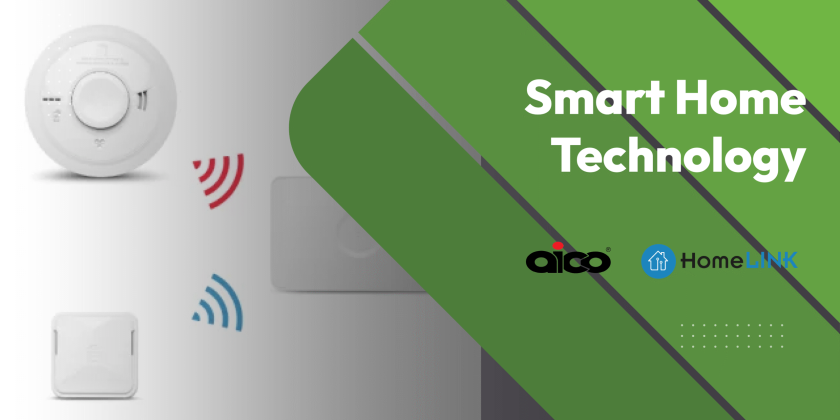Harnessing solar energy is becoming an increasingly popular choice for homeowners and businesses alike, as it offers a sustainable and cost-effective solution to rising energy demands. With advances in technology, the market is teeming with a range of solar panels, each promising efficiency and reliability. However, selecting the right solar panel can be a daunting task, given the multitude of options available. This guide aims to simplify your decision-making process by examining some of the best solar panels currently on the market, outlining their key features, benefits, and considerations. Whether you’re taking your first steps into renewable energy or looking to upgrade an existing system, this overview will provide you with the essential knowledge needed to make an informed choice.
Understanding Solar Panel Types
Monocrystalline vs. Polycrystalline
Monocrystalline and polycrystalline solar panels are two of the most common types available today. Monocrystalline panels are made from a single, pure silicon crystal, giving them a uniform look and typically resulting in higher efficiency rates. They are ideal for those with limited roof space, as they generate more electricity per square metre. However, this efficiency comes at a higher cost.
On the other hand, polycrystalline panels are formed by melting several silicon fragments together. While they are generally less efficient than monocrystalline panels, they are also more affordable. This makes them a popular choice for those with ample space and a tighter budget. Understanding the differences between these two types can help you weigh the balance between efficiency, aesthetics, space, and cost, ultimately guiding you to the panel that best suits your individual needs and circumstances.
Thin Film Solar Panels
Thin film solar panels are another option in the solar energy landscape, known for their lightweight and flexible nature. Comprised of photovoltaic materials applied to a variety of substrates, these panels are less cumbersome than traditional crystalline panels. They can be installed in places where rigid panels may not fit, such as curved surfaces or portable applications. Despite their versatility, thin film panels generally offer lower efficiency rates compared to monocrystalline and polycrystalline panels. This means they require more space to generate the equivalent amount of power. However, their lower production cost can make them an attractive option for large-scale installations where space isn’t a primary concern. Additionally, they perform better in low-light conditions and high temperatures, maintaining a consistent output throughout the day. When considering thin film solar panels, weigh the balance between flexibility, cost, and efficiency to determine their suitability for your energy needs.
Emerging Solar Technologies
The solar industry is witnessing exciting advancements with emerging technologies pushing the boundaries of efficiency and application. One such technology is perovskite solar cells, which promise higher efficiency and lower production costs due to their simple fabrication process. While still in the research phase, their potential to enhance overall solar panel effectiveness is significant. Another promising development is bifacial solar panels, designed to capture sunlight from both sides, effectively increasing energy yield. These panels are particularly effective in environments where sunlight reflects off surfaces like snow or water. Additionally, building-integrated photovoltaics (BIPV) offer a seamless integration of solar technology into building materials, providing an aesthetic solution for harnessing solar power. Although these technologies are not yet widely available, they signify a future of more efficient, versatile, and aesthetically pleasing solar solutions. Staying informed about these advancements can provide insights into the future direction of solar energy options.
Evaluating Solar Panel Efficiency
Importance of Efficiency Ratings
Efficiency ratings are a critical factor when assessing solar panels, as they determine how well a panel converts sunlight into usable electricity. These ratings are expressed as a percentage, indicating the fraction of sunlight that can be converted into energy. Higher efficiency panels produce more electricity per square metre, making them ideal for installations where space is limited or where higher energy output is required. This can be particularly important in urban settings or for commercial applications where every square metre counts. Furthermore, while high-efficiency panels often come at a premium price, the long-term savings on energy bills and the potential for generating more electricity make them a worthwhile investment. Understanding efficiency ratings also helps in comparing different brands and models, ensuring that you select a panel that meets your specific requirements and offers the best return on investment. Being informed about efficiency can greatly aid in making a more economic and effective choice.
Factors Affecting Performance
Several factors can influence the performance of solar panels, impacting their efficiency and energy output. One key factor is the angle and orientation of the panels, as optimal positioning maximises sunlight exposure throughout the day. Shading from trees, buildings, or other obstructions can significantly reduce a panel’s effectiveness, so it is essential to ensure a clear path for sunlight. Temperature also plays a role; solar panels generally operate more efficiently at cooler temperatures, so high heat can slightly decrease performance. Dirt, dust, and debris can accumulate on the surface of panels, blocking sunlight and reducing efficiency, making regular cleaning and maintenance crucial. Additionally, the quality of the installation and the inverter used to convert solar energy can affect overall system performance. By understanding and mitigating these factors, you can optimise your solar panel system to achieve maximum efficiency and energy generation. This awareness ensures you get the most out of your investment in solar technology.
Cost Considerations and Value
Initial Investment and Long-Term Savings
Investing in solar panels requires a considerable upfront cost, but it is essential to view this as a long-term financial strategy. The initial investment includes purchasing the panels, installation fees, and any necessary permits or inspections. While the cost can be substantial, many governments offer incentives, such as tax credits and rebates, to offset these expenses. Over time, the real value of solar panels lies in their ability to significantly reduce, or even eliminate, electricity bills. As energy prices continue to rise, the savings on utility costs can quickly add up, often leading to a return on investment within several years. Moreover, solar panels can increase property value, providing an additional financial benefit should you decide to sell your home. By considering both the initial outlay and the potential long-term savings, you can better assess the economic viability of transitioning to solar energy and make an informed decision that aligns with your financial goals.
Government Incentives and Rebates
Government incentives and rebates play a crucial role in making solar energy more accessible and affordable. These financial incentives are designed to encourage the adoption of renewable energy by reducing the initial cost burden for consumers. In the UK, the Smart Export Guarantee (SEG) allows solar panel owners to sell excess electricity back to the grid, providing a steady income stream. Additionally, some local authorities offer grants or interest-free loans to cover installation costs. Researching available incentives in your area is vital to maximise savings and reduce upfront expenses. These programmes not only make solar panels more affordable but also enhance their return on investment by shortening the payback period. By taking advantage of government support, you can significantly lower the overall cost of a solar energy system, making the transition to sustainable energy both financially viable and environmentally responsible. Understanding these opportunities can be a game-changer in your decision to invest in solar technology.
Installation and Maintenance Insights
Choosing a Reliable Installer
Selecting a reliable installer is as crucial as choosing the right solar panels. A proficient installer ensures your system is optimally positioned, securely mounted, and efficiently connected to your home’s electrical system. Begin by researching local companies with a solid reputation, focusing on those certified by industry-recognised bodies, such as the Microgeneration Certification Scheme (MCS) in the UK. Reading customer reviews and testimonials can provide insights into their service quality and reliability. Additionally, obtain multiple quotes to compare pricing and services, ensuring transparency in what each package includes. A reliable installer will offer a comprehensive warranty, covering both the panels and the installation work, providing peace of mind should issues arise. They should also provide guidance on system maintenance and performance monitoring. By carefully evaluating potential installers, you can ensure a smooth installation process, optimising your solar panel system’s long-term performance and contributing to a sustainable future.
Routine Maintenance Practices
Routine maintenance is vital to ensure your solar panel system operates at peak efficiency. Regular cleaning is the most straightforward task, as dust, leaves, and bird droppings can accumulate on the surface, reducing sunlight absorption. Depending on your location and environment, cleaning might be necessary every few months. Inspecting the panels for damage and ensuring that all connections are secure is also crucial. Monitoring energy output regularly can help detect any drops in performance, indicating potential issues that need addressing. It’s advisable to have a professional inspection every few years to check for more technical problems, such as inverter efficiency or wiring issues. Keeping detailed records of maintenance activities aids in maintaining a consistent schedule and can be valuable if warranty claims are needed. By implementing these routine maintenance practices, you can extend the lifespan of your solar panels and ensure they continue to provide maximum energy savings.
Environmental Impact and Sustainability
Reducing Carbon Footprint
Switching to solar energy is a powerful way to reduce your carbon footprint and contribute to environmental sustainability. Solar panels generate electricity without emitting carbon dioxide or other harmful pollutants, unlike fossil fuels. By harnessing energy from the sun, you significantly decrease your reliance on non-renewable energy sources, cutting down on greenhouse gas emissions. This transition not only helps combat climate change but also fosters cleaner air and a healthier environment. Over the lifespan of a solar panel system, the cumulative reductions in emissions can be substantial, equivalent to planting hundreds of trees or taking numerous cars off the road. Furthermore, as technological advancements continue, the production process of solar panels is becoming more sustainable, further reducing their environmental impact. By choosing solar energy, you are making a commitment to a more sustainable future, setting an example for others and contributing to global efforts in preserving our planet for future generations.
Recycling and Disposal Options
As solar panels reach the end of their lifespan, proper recycling and disposal become essential to maintaining their environmental benefits. Solar panels are primarily made of materials like glass, aluminium, and silicon, which can be recycled and reused. In the UK, recycling programmes are emerging, facilitated by organisations committed to sustainable disposal practices. These programmes ensure that valuable materials are recovered, reducing waste and the need for raw material extraction. When disposing of solar panels, it is crucial to partner with certified recycling facilities that adhere to environmental regulations. Some manufacturers also offer take-back schemes, where they reclaim and recycle old panels. This responsible approach not only minimises environmental impact but also aligns with the principles of a circular economy. By choosing recycling and proper disposal, you contribute to reducing the ecological footprint of solar technology and support the ongoing sustainability of renewable energy solutions.


